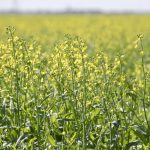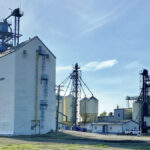
Oilseeds

Soybeans early signal of soil issues
Most affected spots frequently in high-traffic areas in fields

Can a cool-season crop survive climate change?
As temperatures rise, so does the pressure on the Prairies’ Cinderella crop, canola

Pollinators key to canola crops’ success
Your busy little unpaid employees make it all possible

Soybean cyst nematode evading resistance genes
Scant sources for genetic resistance make the trend inevitable over time

Canada’s ‘Cinderella crop’ keeps on delivering for farmers
The crop that built a reputation for its high-quality food oil, is expected to see big demand close to home as a low-carbon, renewable fuel

Researchers use gene editing to create breakthrough canola variety
Shorter, highly branched canola plants with more pods show the power of the cutting-edge technology

Taking the path of least resistance opens door to clubroot ‘disaster’
Only use resistant cultivars, says canola council, and back it up with scouting and longer rotations

Canola industry bullish on demand, nervous about emission targets
Greenhouse gas emission targets bring both potential boon and hardship to Canadian canola growers

The pros and cons of non-GM soybeans
There’s the potential for higher returns, but growing them requires a bit more attention to detail

Ceres Global Ag Corp. making its presence known on the oilseed processing stage
Manitoba will continue to be important in this grain company’s growth, says CEO Robert Day


